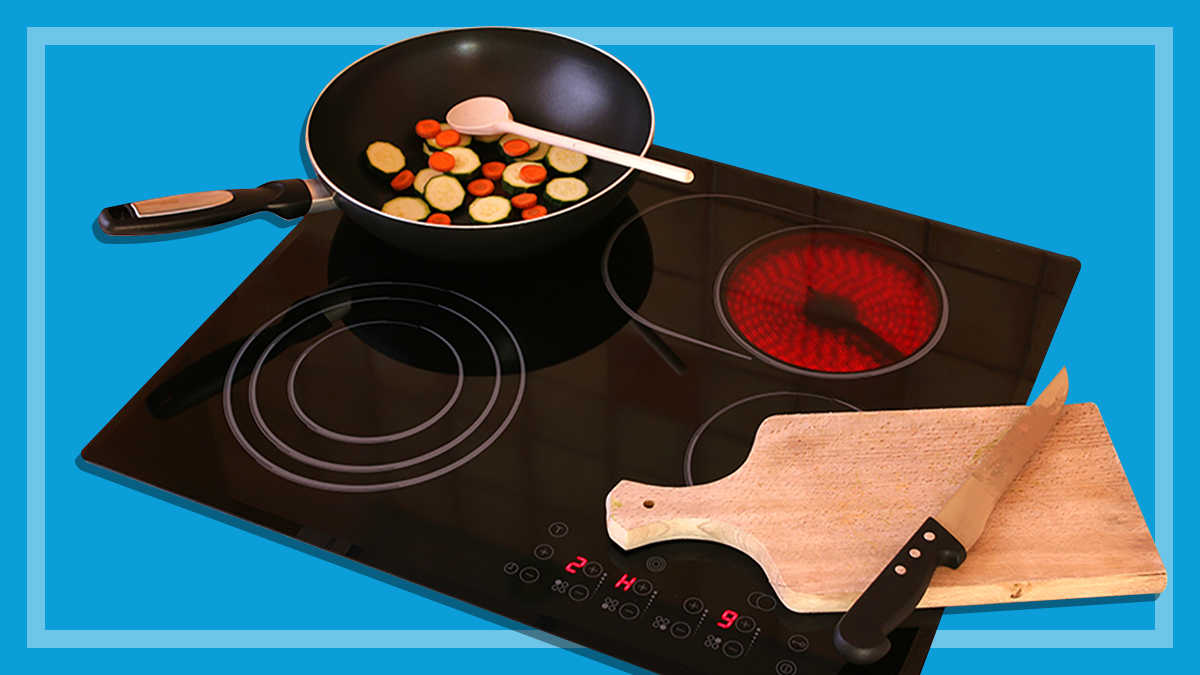Get our independent lab tests, expert reviews and honest advice.
New to induction cooking? Follow these top tips for cooktop success

Need to know
- Induction cooktops are generally more expensive than gas cooktops, but they have many benefits, including energy efficiency and precise temperature control
- Choosing the right size and type of cookware to use on your induction cooktop is one of the things you'll need to consider when cooking with induction
- CHOICE experts test a range of cooktops – including ceramic, induction and portable induction – in our kitchen labs, to help you find the best fit for your kitchen. CHOICE members have access to our detailed, independent reviews.
Sleek, stylish and easy to use, induction cooktops have long been a popular choice for home chefs. And in recent years, increasing awareness of the health risks associated with cooking with gas, combined with the rising cost of energy have meant more and more people are making the switch to an energy efficient induction cooktop.
If you’ve recently bought a shiny new induction cooktop, or are looking to invest, here are some tips and tricks to make sure you get the most out of this modern mode of cooking.
Do: Use the right cookware for induction
You can’t just put any old pan on an induction cooktop. This is because induction cooktops work very differently from ceramic cooktops: they use a magnetic field under the surface to transfer heat directly to your pots and pans. This means you need to choose induction-friendly cookware with a ferrous base containing a magnetic element.
Cast iron, steel, some enamelled steel, and stainless steel pans with an iron base or core are suitable, but glass, aluminium and copper generally are not.
The stronger a magnet sticks to the bottom of the induction pan, the better
CHOICE kitchen expert Fiona Mair
You can test whether your current cookware is induction-friendly with a fridge magnet – if it doesn’t stick, it’s off to the shops for new pots and pans. Although most induction-compatible cookware will be clearly labelled on the box, Fiona suggests taking a magnet with you to the shops to check the efficiency of the cookware.
“The stronger a magnet sticks to the bottom of the induction pan, the better,” she says.
Don’t: Use your cooktop as a preparation space
If your kitchen is on the small side, using your cooktop as a space for preparing ingredients may seem harmless, but you run the risk of damaging it. It’s not a suitable chopping board, no matter how rushed you are!
Do: Pick cookware that suits the size of your induction cooktop
Size does matter when you’re buying induction cookware. According to Fiona, the cookware base needs to be as close to the size of the cooking zone as possible – if it’s too small, it won’t respond; if it’s too big, your food won’t cook evenly and it won’t be energy efficient.
“Measure the size of your cooking zones to make sure you’re getting the right-sized cookware for your induction cooktop,” Fiona says.Different induction cooktops have different-sized cooking zones, so if you’re looking to purchase, take this into account when choosing the one that’s right for you. You can see the different kinds of cooking zone configurations that are available in our induction cooktops review.
Don’t: Drag your cookware over your cooktop
Take care when transferring pots and pans to and from your cooktop – dragging them can scratch or damage the surface (it’s easily done when cooking for the troops!). Be sure to lift them off instead.

Do: Wipe up spills quickly
Induction cooktops are generally the easiest type of cooktop to clean (particularly when compared to gas cooktops which have lots of fiddly bits). However, they should still be regularly cleaned, so if you spill anything on your induction cooktop, be sure to wipe it up straight away (even if you follow the ‘I cook, you clean’ rule in your house). Once spills dry onto the cooktop, they can be hard to remove.
CHOICE kitchen expert Fiona Mair says: “Sugary spills can stick to the glass and create an uneven surface on your glass cooktop”.
“Spills on induction cooktops won’t bake on in the same way as they will with a ceramic cooktop, because the surface doesn’t heat up. But you’ll need to wipe any grease that splatters on the touch controls while you’re cooking as they may stop responding properly when they’re greasy.”
Don’t: Use harsh cleaners on your cooktop
If you didn’t follow the above rule, and you now have stubborn stains on your cooktop, you might be tempted to reach for the strongest cleaning product in your cupboard – but don’t! Some products, especially abrasive cleaners, can damage and scratch the surface of your cooktop.
And although a glass cleaner may seem like an obvious choice, it will just leave streaks. Instead, ensure you use a cooktop cleaner suitable for glass surfaces and a microfibre cloth to keep your cooktop looking as good as new.

Do: Experiment with power levels and temperature control
Cooking with induction cooktops can take a little bit of practice, so you may need to play around a little to achieve perfect results with your usual recipes. Some cooking techniques, such as stir-frying or boiling, may require a little adjustment when switching to induction.
Induction cooktops reach higher temperatures more quickly than traditional stovetops, so adjust power levels and keep an eye on your food to avoid burning or overheating.
Don’t: Be turned off by the cost
Yes, induction cooktops are generally more expensive, but don’t let that deter you if you can afford to invest in one. There are many benefits to an induction cooktop – and the continuous, easy-to-clean surface is just the start.
Yes, induction cooktops are more expensive, but don’t let that deter you if you can afford to invest in one
Fiona points out that induction cooktops have many excellent features, including sensors to monitor temperature, an automatic switch-off when the pan is overheating, pan detection (which turns the zone off if a pan is removed) and no naked flames or harmful gases. Plus, the instant heat saves you time in the kitchen – it can boil water twice as fast as a traditional cooktop.
Our experts regularly test the latest available induction cooktops and our current review includes over 30 models from brands including AEG, Asko, Bosch, Electrolux, Fisher & Paykel, Miele, Westinghouse and more. So if you’re considering investing, check out our expert reviews before you buy.
What about portable induction?
If you can’t quite stretch to an installation of a full-size induction cooktop right now, you may be considering trialling a portable induction cooktop. Much smaller than standard induction cooktops (usually with just a single cooking zone), these are available for as little as $55 and require no installation beyond plugging it into the wall.
CHOICE experts recently tested a batch of portable induction cooktops and, although they say that they can be a good option in some situations, there are some things to consider before you buy.
Find out more here: Should you buy a portable induction cooktop?

Do: Have your cooktop installed by a professional
This job is not for the DIYers – all cooktops should be hard-wired by a licensed electrician.
Besides the safety aspect, every appliance has different needs when it comes to power output. You’ll need to check that your home can accommodate the wattage of your cooktop. Some homes might need an extra circuit installed.
Don’t: Be alarmed if your induction cooktop is noisy
When cooking with induction, you may notice some weird noises – but they’re rarely anything to worry about. Fiona says “a buzz or hum is common and you might notice it gets louder at higher settings”.
If you hear a clicking sound, this could be an indication that your cookware doesn’t have a strong magnetic hold and isn’t working well with the cooktop.






